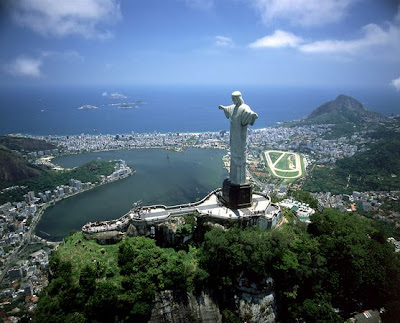There are many miracles created by God and man. This all
natural and man made that shows examples of the beauty and excellence of
archeology. Many research studies and analysis of work done before announcing
this structure as the Seven Wonders of the World.
The list of new Seven Wonders of the World was released on
July 7, 2007 in Lisbon, Portugal. New and old entries competed for the title of
the Seven Wonders of the World. many who vote according to their liking. From
the list of 25 finalist monuments only 7 of them were selected as wonders of
the world.
The 7 Wonders of the World are:-
- Chichén Itza (Mexico)
Chichen Itza which means "at the mouth of the well of Itza". The Kukulkan Pyramid in Chichen-Itza which known as "El Castillo" (the castle), is one of the new seven wonders of the world elected in 07.07.2007. It is exactly 24 m. high considering the upper platform. It is the most famous Mayan temple city and was once the political and economic center of the Mayan civilization.
- Christ the Redeemer (Rio de Janeiro, Brazil)
Towering over Rio de Janeiro, the Christ Redeemer statue is 125 feet (38 m) tall, including the pedestal. The pedestal contains a chapel large enough for 150 worshipers. The famous Rio de Janeiro Christ the Redeemer statue is the face of this amazing city. This breath taking masterpiece overlooking Rio has been admired and visited by millions of people since it was first built in 1931. The Rio de Janeiro Christ the Redeemer statue is one of the most significant land marks around the world.
- The Great Wall of China
The Great Wall, one of the greatest wonders of the world, was listed as a World Heritage by UNESCO in 1987. Just like a gigantic dragon, the Great Wall winds up and down across deserts, grasslands, mountains and plateaus, stretching approximately 8,851.8 kilometers (5,500 miles) from east to west of China. With a history of more than 2000 years, some of the sections are now in ruins or have disappeared. However, it's the largest man-made monument on this earth that was built to attack and send the Mongol tribes out of China.
- Machu Picchu (Peru)
7,000 feet above sea level and nestled on a small hilltop between the Andean Mountain Range, the majestic city soars above the Urabamba Valley below. The Incan built structure has been deemed the "Lost Cities". The structures are arranged so that the function of the buildings matches the form of their surroundings devided into three areas like agricultural, urban, and religious.
- Petra (Jordan)
Petra is located about 262 km south of Amman and 133 km north of Aqaba. It is the legacy of the Nabataeans, an industrious Arab people who settled in southern Jordan more than 2000 years ago. Admired then for its refined culture, massive architecture and ingenious complex of dams and water channels.
The approach through a kilometer long, cool, and gloom chasm
(or Siq) a long narrow gorge whose steeply rising sides all but obliterate the
sun, provides a dramatic contrast with the magic to come. Suddenly the gorge
opens into a natural square dominated by Petra's most famous monument, The
Treasury (El-Khazneh), whose intricately carved facade glows in the dazzling
sun.
- The Roman Coliseum (Italy)
The Flavius amphitheatre is known as the "Colosseum" or "Coliseum". Started by Emperor Vespasian of the Flavia family, it was opened by his son Titus in 80 A.D. The Colosseum is one of the most imposing ancient structures. Imagine it all white, completely covered in splendid travertine stone slabs. It is elliptic in shape in order to hold more spectators. It had four floors; the first three had eighty arches each; the arches on the second and third floors were decorated with huge statues.
- The Taj Mahal (India)
The Taj is the most beautiful monument built by the Mughals, the Muslim rulers of India. Taj Mahal is built entirely of white marble. Its stunning architectural beauty is beyond adequate description, particularly at dawn and sunset. The Taj seems to glow in the light of the full moon. On a foggy morning, the visitors experience the Taj as if suspended when viewed from across the Jamuna river.
Taj Mahal was built by a Muslim, Emperor Shah Jahan (died
1666 C.E.) in the memory of his dear wife and queen Mumtaz Mahal at Agra,
India. It is an "elegy in marble" or some say an expression of a
"dream". Taj Mahal (meaning Crown Palace) is a Mausoleum that houses
the grave of queen Mumtaz Mahal at the lower chamber. The grave of Shah Jahan
was added to it later. Taj Mahal was constructed over a period of twenty-two
years, employing twenty thousand workers. It was completed in 1648 C.E. at a
cost of 32 Million Rupees.




















No comments:
Post a Comment